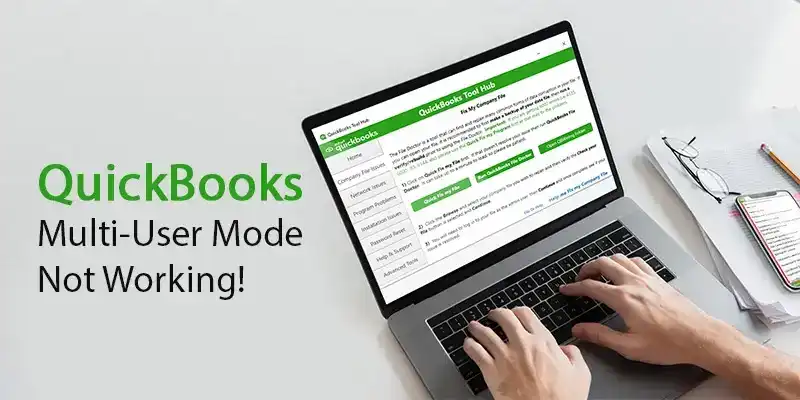
What is American Families Plan (AFP)
The American Families Plan (AFP) was a policy proposal introduced by the Biden administration in 2021. It was not a law, but a legislative framework aimed at expanding support for U.S. families, workers, and children through education, childcare, paid leave, and tax credits.
Here’s the plan in plain terms:
What the American Families Plan Proposed
1. Universal Preschool
Free, high-quality preschool for all 3- and 4-year-olds.
2. Two Years of Free Community College
Tuition-free access for eligible students.
3. Expanded Child Tax Credit & Earned Income Tax Credit
Continued higher credit amounts introduced during the pandemic.
4. Paid Family and Medical Leave
A national program providing up to 12 weeks of paid leave.
5. More Affordable Childcare
Caps on childcare costs for low- and middle-income families.
6. Lower Healthcare Costs
Expanded ACA subsidies to reduce insurance premiums.
7. Nutrition Assistance
Expanded programs like SNAP and school meal support.
Was the AFP Enacted?
Not fully. Portions of the proposal were broken up and negotiated in Congress, and some elements were later included in other bills (like the Inflation Reduction Act), but the full AFP package as originally proposed did not pass.
| Table of Contents: |
The American Families Plan is a social policy and an investment in the children and families of the American people. It would help families –
- Cover the basic expenses
- Lower health insurance premiums, and
- Continue the American Rescue Plan’s historic reductions in child poverty.
The overall objective of the AFP is to–
- grow the American middle class
- ensure that all Americans benefit from the economic growth, and
- make the United States more competitive in the global market-place
Towards this end the AFP will:
Ensure free early education and make further education affordable
In the early part of the 20th century, the expansion of access to free public high school in the United States set a new global standard. Direct public investment in the children’s future propelled U.S. economic growth and enhanced its global competitiveness. Now, new evidence suggests that 13 years of school is no longer sufficient to prepare students for success in today’s economy. Research shows that early investment to support child development will provide every student the opportunity to obtain a postsecondary degree or certificate.
Towards this end, the AFP calls for –
- $200 billion for free universal pre-school for all three- and four-year-olds in high quality pre-school facilities..
- $109 billion for two years of free community college so that every student has the ability to obtain a degree or certificate.
- $85 billion investment in Pell Grants, which would help students seeking a certificate or a two- or four-year degree.
- $62 billion to invest in evidence-based strategies to strengthen completion and retention rates at community colleges and institutions that serve students from the most disadvantaged communities.
- $46 billion investment to make college more affordable for the students from the low and middle income groups. This includes students at
- Historically Black Colleges and Universities (HBCUs),
- Tribal Colleges and Universities (TCUs), and
- Institutions such as Hispanic-serving institutions, Asian American and Native American Pacific Islander-serving institutions, and other minority-serving institutions (MSIs)
- $9 billion to train, equip and diversify American teachers in order to ensure that high school graduates are ready for success.
UNIVERSAL PRE-SCHOOL FOR ALL THREE- AND FOUR-YEAR-OLDS
- Investment in Preschool is critical to ensuring that children start kindergarten with the skills that set them up for success in school
- Research shows that children who attend universal pre-K are more likely to take honors classes and less likely to repeat a grade.
- Another study finds low-income children who attend universal programs do better in math and reading as late as eighth grade
- Unfortunately, many children do not have access to a full range of high-quality pre-school programs Preschool has also been shown to increase labor force participation among parents – especially women — boosting family earnings and driving economic growth
- By some estimates, the benefits of a universal pre-K system to U.S. GDP are more than three times greater than the investment needed to provide this service
The AFP –
- Calls for a national partnership with states to offer free, high-quality, accessible, and inclusive preschool to all three-and four-year-olds, benefitting five million children and saving the average family $13,000, when fully implemented.
- Prioritizes high-need areas.
- Enables communities and families to choose the settings that work best for them.
- Ensures that all publicly-funded preschool is high-quality
- student-to-teacher ratios
- high-quality and developmentally appropriate curriculum, and
- supportive classroom environments that are inclusive for all students
- Will leverage investments in tuition-free community college and teacher scholarships to support
- those who wish to earn a bachelor’s degree or another credential that supports their work as an educator, or
- to become an early childhood educator
- Provides that educators will receive job-embedded coaching, professional development, and wages that reflect the importance of their work.
- Ensures that all employees in participating pre-K programs and Head Start will earn at least $15 per hour
- those with comparable qualifications will receive compensation commensurate with that of kindergarten teachers.
These investments will give American children a head start and pave the way for the best-educated generation in U.S. history.
FREE COMMUNITY COLLEGE AND OTHER POSTSECONDARY EDUCATION INVESTMENTS
Over the last 40 years, the most growth in jobs requires higher levels of job preparation, including education and training. Today, people with more than a high school degree hold more than 70% of the jobs.
Additional support must be provided to American workers-
- to build or enhance their skills to remain competitive
- increase their earnings, and
- share in the overall benefits of the new economy
The AFP expands access to affordable postsecondary education. More specifically the plan will:
- Offer two years of free community college to all Americans, including DREAMers[p1] .
- The COVID crisis has led to a significant decline in college enrolment particularly among low-income students and students of color.
- Even before the pandemic, cost remained a barrier to attending and graduating from community college for many Americans
- The planned investment of $109 billion will ensure that first-time students and workers wanting to reskill can enroll in a community college to earn a degree or credential for free
- Students can use the benefit over three years and, if circumstances warrant, up to four years,
- If all states, territories, and Tribes participate, about 5.5 million students would pay $0 in tuition and fees
- Provide up to approximately $1,400 in additional assistance to low-income students by increasing thePell Grant[p2] award.
- While nearly 7 million students depend on Pell Grants, the grant has not kept up with the rising cost of college
- The maximum grant went from covering nearly 80 percent of the cost of a four-year college degree to under 30 percent — leading millions of low-income students to take out debt to finance their education
- One in three community college students receive Pell Grants to pay for their education
- Among students of color
- nearly 60 percent of Black
- half of American Indian or Alaska Native
- almost half of Latino, and
- over one-third of Native Hawaiian or Pacific Islander students rely on Pell Grants to pay for college.
The AFP will increase the maximum Pell Grant award by approximately $1,400. The plan also allows DREAMers to access Pell Grants.
- Higher education can lead to higher pay, financial stability, social mobility, and better health outcomes. Its social benefits are a reduction in crime rates and higher civic engagement. However, many students enter college but do not graduate.
- Some research shows that only approximately 60% students finish any type of degree or certificate program within six years
- Students need additional support to complete their higher education
- States, territories, and Tribes will receive grants-
- To provide funding to colleges that adopt innovative, proven solutions for student success
- For wraparound services ranging from child care and mental health services to faculty and peer mentoring
- For emergency basic needs
- For practices that recruit and retain diverse faculty
- For transfer agreements between colleges and
- For evidence-based remediation programs
- HBCUs, TCUs, and MSIs are vital to helping underrepresented students move to the top of the income ladder. Yet, these institutions have significantly less resources than other top colleges and universities, undermining their ability to grow and support more students.
The AFP –
- Provides for two years of subsidized tuition for students from families earning less than $125,000 enrolled in a four-year HBCU, TCU, or MSI
- Seeks to expand existing institutional aid grants to HBCUs, TCUs, and MSIs, which can be used by these institutions to –
- strengthen their academic, administrative, and fiscal capabilities,
- Create or expand educational programs in high-demand fields (e.g., STEM, computer sciences, nursing, and allied health).
EDUCATION AND PREPARATION FOR TEACHERS
Unfortunately, the U.S. faces a large and growing teacher shortage; people who make a big impact on a child’s life. Before the pandemic, schools across the nation needed more than 100,000 additional teachers who are certified, resulting in key positions going unfilled. Shortage of certified teachers disproportionately impact schools with higher percentages of students of color. These schools have a larger proportion of uncertified teachers. The AFP calls for an investment of $9 billion in American teachers, addressing shortages, improving training and support for teachers, and boosting teacher diversity.
These investments will –
- help improve the quality of new teachers entering the profession
- increase retention rates and
- increase the number of teachers of color
As more teachers stay in the profession, a virtuous cycle is created. Districts save money on recruiting and training new teachers and can invest those funds back into programs that directly impact students.
Specifically, the AFP will:
- Double scholarships for future teachers from $4,000 to $8,000 per year while earning their degree, strengthening the program, and expanding it to early childhood educators.
- Invest in Grow Your Own programs and year-long, paid teacher residency programs, which have a greater impact on-
- student outcomes
- teacher retention, and
- more likely to enroll teacher candidates of color
- Help current teachers earn in-demand credentials
- Many teachers are eager to answer the call to get certified in areas their schools need, like special education
- But they are deterred due to the high cost of professional programs
- The AFP will provide educators with opportunities to obtain additional certifications in high-demand areas like special education, bilingual education, and certifications that improve teacher performance
- This funding will support over 100,000 educators, with priority for
- public school teachers with at least two years of experience
- schools with a significant portion of low-income students or significant teacher shortages
- Teachers, and the students they educate, would stand to benefit from greater mentorship and leadership opportunities
- The AFP will support programs that leverage teachers as leaders, such as high-quality mentorship programs for new teachers and teachers of color
- These programs are proven tools to improve both student outcomes and teacher retention by providing new teachers with the support they need
- The plan will also leverage teachers as leaders of other key priorities within their school buildings, and compensate teachers for this work.
Provide Direct support to children and families
The AFP seeks to ensure that low- and middle-income families spend a maximum of 7% of their earnings on high quality child care.
Workers and families will be provided direct support through a national comprehensive paid family and medical leave program created on the basis of international best practices. People will be able to manage their health and that of their families through this program.
The AFP will also provide critical nutritional assistance to needy families and expand access to healthy meals to the young students so as to reduce childhood hunger.
DIRECT SUPPORT
Costs of raising children – from child care to taking paid leave time to care for a new child or when a child is ill – have grown. Middle-class families and those below this class feel the strain of these rising costs, while wage growth has failed to keep pace. As a consequence of the lack of family friendly policies, the United States has fallen behind its competitors in female labor force participation. A lack of child care options costs the United States economy $57 billion per year in lost earnings, productivity, and revenue. A lack of paid leave options cost workers $22.5 billion each year in lost wages.
CHILD CARE
The high cost of child care continues to make it hard for parents – especially women — to work outside the home and provide for their families. Difficulty in finding high-quality, affordable child care leads some parents to-
- drop out of the labor force entirely
- reduce their work hours, and
- turn down a promotion
This leads to lifetime consequences on earnings, savings, and retirement. These costs are especially significant for mothers and people of color. Over the last forty years, a significant part of the income gains experienced by middle-class families were driven by women’s earnings.
High-quality early care and education are important so that children can take full advantage of education and training opportunities later in life. This is especially important for children from low-income families who often start school without access to high-quality education.
The AFP ensures that low and middle-income families pay no more than 7 percent of their income on high-quality child care for children under 5 years-old. This saves the average family $14,800 per year on child care expenses. It also generates lifetime benefits for three million children and supports hundreds of thousands of child care providers and workers. Parents, primarily mothers, can enter the labor force, and significantly bolster inclusive and equitable economic growth.
Specifically, the AFP will invest to:
- Make child care affordable
- Families will pay only a portion of their income based on a sliding scale
- For the most hard-pressed working families, child care costs for their young children would be fully covered
- Families earning 1.5 times their state median income will pay no more than 7 percent of their income for all children under age five
- The plan will also provide families with a range of inclusive and accessible options to choose from for their child. This includes child care centers, family child care providers and Early Head Start
- Invest in high-quality child care
- Child care providers will receive funding to cover the true cost of quality early childhood care and education
- This includes a developmentally appropriate curriculum, small class size, and culturally and linguistically responsive environments that are inclusive of children with disabilities
- These investments support positive interactions that promote children’s social-emotional and cognitive development
- Invest in the child care workforce
- More than 90% of the early childhood care providers and educators are women and more than 40% are women of color
- They are among the most underpaid workers in the country
- Nearly half receive public income support, leading to high turnover and lower quality of care
- The AFP investment will mean a $15 minimum wage for early childhood staff and ensure that those with similar qualifications as kindergarten teachers receive comparable compensation and benefits
- Child care workers will receive job-embedded coaching and professional development, along with additional training opportunities funded by the American Jobs Plan and American Families Plan
- These investments will lead to better quality care, while also enabling these workers to care for their own families.
- Government spending on income support programs reduce
PAID LEAVE
The United States has fallen behind its competitors in the number of women participating in the labor force. The pandemic has exacerbated this problem, and eroded more than 30 years of progress in women’s labor force participation.
A lack of family-friendly policies, such as paid family and medical leave for when a worker needs time to care for a new child, a seriously ill family member, or recover from their own serious illness, has been identified as a key reason for the U.S. decline in competitiveness. The United States is one of the only countries in the world that doesn’t guarantee paid leave.
- Nearly one in four mothers return to work within two weeks of giving birth
- One in five retirees left or were forced to leave the workforce earlier than planned to care for an ill family member
- Nearly four of five private sector workers have no access to paid leave
- 95 percent of the lowest wage workers, mostly women and workers of color, lack any access to paid family leave
Paid family and medical leave supports workers and families and is a critical investment in the strength and equity of the economy.
- The AFP will create a national comprehensive paid family and medical leave program that will guarantee twelve weeks of paid parental, family, and personal illness/safe leave by year 10 of the program.
- The program will ensure workers receive partial wage replacement
- to take time to bond with a new child
- care for a seriously ill loved one
- deal with a loved one’s military deployment
- find safety from sexual assault, stalking, or domestic violence
- heal from their own serious illness, or
- take time to deal with the death of a loved one.
- The program will ensure workers receive partial wage replacement
- The program will ensure workers get three days of bereavement leave per year starting in year one
- It will provide workers up to $4,000 a month, with a minimum of two-thirds of average weekly wages replaced, rising to 80 percent for the lowest wage workers.
The Healthy Families Act will require employers to allow workers to accrue seven days paid sick leave per year to seek preventative care for them or their family. For example –
- to get a flu shot
- recover from short-term illness, or
- care for a sick child, family member or a family member with disability-related needs.
NUTRITION
The pandemic has added urgency to the issue of nutrition insecurity, which disproportionately affects low-income families and families of color. A poor diet jeopardizes a child’s ability to learn and succeed in school. Nutrition insecurity can also have a long-lasting negative impact on overall health and put children at higher risk of diseases such as diabetes, heart disease, and high blood pressure. 20% of American children are obese and research shows that childhood obesity increases the likelihood of obesity in adulthood.
Diet-related diseases carry significant economic and national security implications such as-
- decreasing work productivity\
- increasing job absenteeism
- threatening military readiness, and
- an incredible financial burden on the health care system
A recent study found that U.S. children are getting their healthiest meals at school. School meals are one of the federal government’s most powerful tools for delivering nutrition security to children.
To ensure the nutritional needs of families are met, the AFP will invest $45 billion to:
- Expand summer EBT to all eligible children nationwide
- The Summer EBT Demonstrations [p3] helps low-income families with children eligible for free and reduced-price meals during the school year, purchase food during the summer
- Research shows that this program decreases food insecurity among children and has led to positive changes in nutritional outcomes.
- Expand healthy school meals
- The Community Eligibility Provision (CEP) allows high-poverty schools to provide meals free of charge to all of their students
- It is currently available to –
- individual schools
- groups of schools within a district or
- an entire district with at least 40 percent of students
participating in the Supplemental Nutrition Assistance Program (SNAP) or other means tested programs
- The program is particularly important because some families whose children would be eligible for free meals may not apply for them due to stigma or not fully understanding the application process
- Other families in high-poverty schools may still be facing food insecurity but make just enough to not qualify for free school meals
- Only 70 percent of eligible schools have adopted CEP, because some schools would receive reimbursement below the free meal rate.
The AFP will fund $17 billion to expand free meals for children in the highest poverty districts by reimbursing a higher percentage of meals at the free reimbursement rate through CEP. Additionally, theAFP will lower the threshold for CEP eligibility for elementary schools to 25 percent of students participating in SNAP. The plan will also expand direct certification to automatically enroll more students for school meals based on Medicaid and Supplemental Security Income data.
- Launch a healthy foods incentive demonstration
- To build on progress made during the Obama Administration to improve the nutrition standards of school meals, this new $1 billion demonstration will support schools that are further expanding healthy food offerings
- Schools adopting specified measures that exceed current school meal standards will receive an enhanced reimbursement as an incentive.
- Facilitate re-entry for formerly incarcerated individuals through SNAP eligibility
- Individuals convicted of a drug-related felony are currently ineligible to receive SNAP benefits unless a state has taken the option to eliminate or modify this restriction
- Denying these individuals—many of whom are parents of young children—SNAP benefits jeopardizes nutrition security
- SNAP is a critical safety net for many individuals as they search for employment to support themselves and their families
- This restriction disproportionately impacts African Americans, who are convicted of drug offenses at much higher rates than white Americans
UNEMPLOYMENT INSURANCE REFORM
The unemployment insurance (UI) system is a critical lifeline to workers at the hardest times. The system is in need of reform and strengthening to overcome the inefficiencies of fraud and system related delays. The unemployed people of color have borne the brunt of the UI system’s weaknesses. AFP is committed to strengthening and reforming the system for the long term.
Extend the tax cuts for families with children and for American workers
Many American families and workers feel the squeeze of high cost of living to meet their basic needs and too-low wages. At the same time, the wealthiest Americans continue to get wealthier. The AFP will extend key tax cuts in the American Rescue Plan that benefit lower- and middle-income workers and families, including –
- the Child Tax Credit
- the Earned Income Tax Credit, and
- the Child and Dependent Care Tax Credit.
Tax credits for working families have been shown to boost child academic and economic performance over time, as well as help families make ends meet.
The AFP will also extend the health insurance tax credits in the American Rescue Plan that is lowering health insurance costs by an average of $50 per person per month.
TAX CUTS FOR AMERICA’S FAMILIES AND WORKERS
Direct assistance to families in the form of tax credits paid on a regular basis –
- lifts children and families out of poverty
- makes it easier for families to make ends meet, and
- boosts the academic and economic performance of children over time.
Specifically, the AFP seeks to:
- Extend the tax credits on premiums on the expanded Affordable Care Act provided in the American Rescue Plan. The AFP –
- Builds on the Affordable Care Act and lower prescription drug costs for everyone by letting Medicare negotiate prices
- Reduces health insurance premiums and deductibles for those who buy coverage on their own
- Creates a public option and the option for people to enroll in Medicare at age 60, and closing the Medicaid coverage gap to help millions of Americans gain health insurance
- Extend the Child Tax Credit increases in the American Rescue Plan through 2025 and make the Child Tax Credit permanently 100% refundable
- The Child Tax Credit will increase from $2,000 per child to $3,000 per child for six-years old and above, and $3,600 per child for children under six. It also makes 17-year-olds eligible.
- Making the credit fully refundable on a permanent basis, will benefit low-income families
- For a family with two parents earning a combined $100,000 per year and two children under six, the Child Tax Credit expansion means an additional $3,200 per year in tax relief. For a family with two parents earning a combined $24,000 per year and two children under six, the expansion means even more, with a credit increase of $4,400 because the full credit was not previously fully available to them.
- The credit would also be delivered regularly. This means that families will receive regular payments that allow them to cover household expenses as they arise
- Make permanent the temporary Child and Dependent Care Tax Credit (CDCTC) expansion enacted in the American Rescue Plan
- Families will receive a tax credit for as much as half of their spending on qualified child care for children under age 13, up to a total of $4,000 for one child or $8,000 for two or more children
- A 50 percent reimbursement will be available to families making less than $125,000 a year, while families making between $125,000 and $400,000 will receive a partial credit
- The credit can be used for expenses ranging from full-time care to after school care to summer care
- Make the Earned Income Tax Credit Expansion for childless workers permanent
- The American Rescue Plan increased the EITC for childless workers by 300%, benefitting low-wage workers, many of whom are essential workers including cashiers, cooks, delivery drivers, food preparation workers, and childcare providers
- A childless worker who works 30 hours per week at $9 per hour earns income that, after taxes, leaves them below the federal poverty line. By increasing her EITC to more than $1,100, this EITC expansion helps pull such workers out of poverty.
Criticism of the AFP
The AFP has been criticized by various individuals and entities for various reasons. The prominent criticisms are:
- After year 2025, the Child Tax Credit portion of the child allowance, which the poorest families are eligible for, is set to decline from $3,000/$3,600 to $1,000. This seems to be a political gimmick to make this a part of the next election campaign. However it could also be a wait and watch approach. In view of the pandemic the poor sections of society are paid a monthly support by way of the CTC and this support may not be required by 2026 thereby reducing the burden on the exchequer.
- The paid leave program lacks clarity on how it will be implemented. There may be incidental legislation to be passed to implement this program.
- The paid leave program talks of replacing 80% of the earnings of the lowest wage earners. However, the lowest wage earners may not be able to forego even 20% of their earnings for twelve weeks to subsist.
- Child care benefits by way of tax cuts and reimbursements need a deeper rethink in terms of
- timing of payments and
- the burden the lower sections of society will have to bear in the interim, until they receive their payments
Conclusion
The American Families Plan is an investment in American children and families—helping families cover their basic expenses, lowering health insurance premiums, and continuing the American Rescue Plan’s historic reductions in child poverty. These plans reinvest in the future of the American economy and American workers. Part of this proposal relating to spending on welfare and social services have been incorporated in the Build Back Better Act.
Leading economic research shows that the investments proposed in the American Families Plan will yield significant economic returns –
- boosting productivity and economic growth
- producing a larger, more productive, and healthier workforce on a sustained basis, and
- generating savings to states and the federal government
A dollar invested in high-quality early childhood programs for low-income children will result in up to $7.30 in benefits, including increased wages, improved health, and reduced crime. Parental paid leave will keep mothers in the workforce, increasing labor force participation and boosting economic growth. And, sustained tax credits for families with children will yield a lifetime of benefits, ranging from higher educational attainment to higher lifetime earnings
In all, the American Families Plan includes $1.8 trillion in investments and tax credits for American families and children over ten years. It consists of about $1 trillion in investments and $800 billion in tax cuts for American families and workers. Alongside the American Families Plan, a set of measures makes sure that the wealthiest Americans pay their share in taxes, while ensuring that no one making $400,000 per year or less will see their taxes go up. When combined with President Biden’s American Jobs Plan, this legislation will be fully paid for over 15 years, and will reduce deficits over the long term.
Disclaimer: This Article is for information only and readers are advised to seek professional advice before acting upon the information provided herein
[p1]: “DREAMers are children covered by the Deferred Action on Childhood Arrivals program (DACA) and the Development, Relief, and Education for Alien Minors Act (DREAM):
[p2]: “A Pell Grant is a subsidy the U.S. federal government provides for students who need it to pay for college. Federal Pell Grants are limited to students with financial need, who have not earned their first bachelor’s degree, or who are enrolled in certain post-baccalaureate programs, through participating institutions.”
[p3]:” As part of its efforts to end child hunger, the USDA Food and Nutrition Service (FNS) created the Summer Electronic Benefits Transfer for Children demonstration to study the use of electronic benefits transfer (EBT) technology in providing food assistance to low-income children during the summer by providing their families with more resources to use at food stores”








